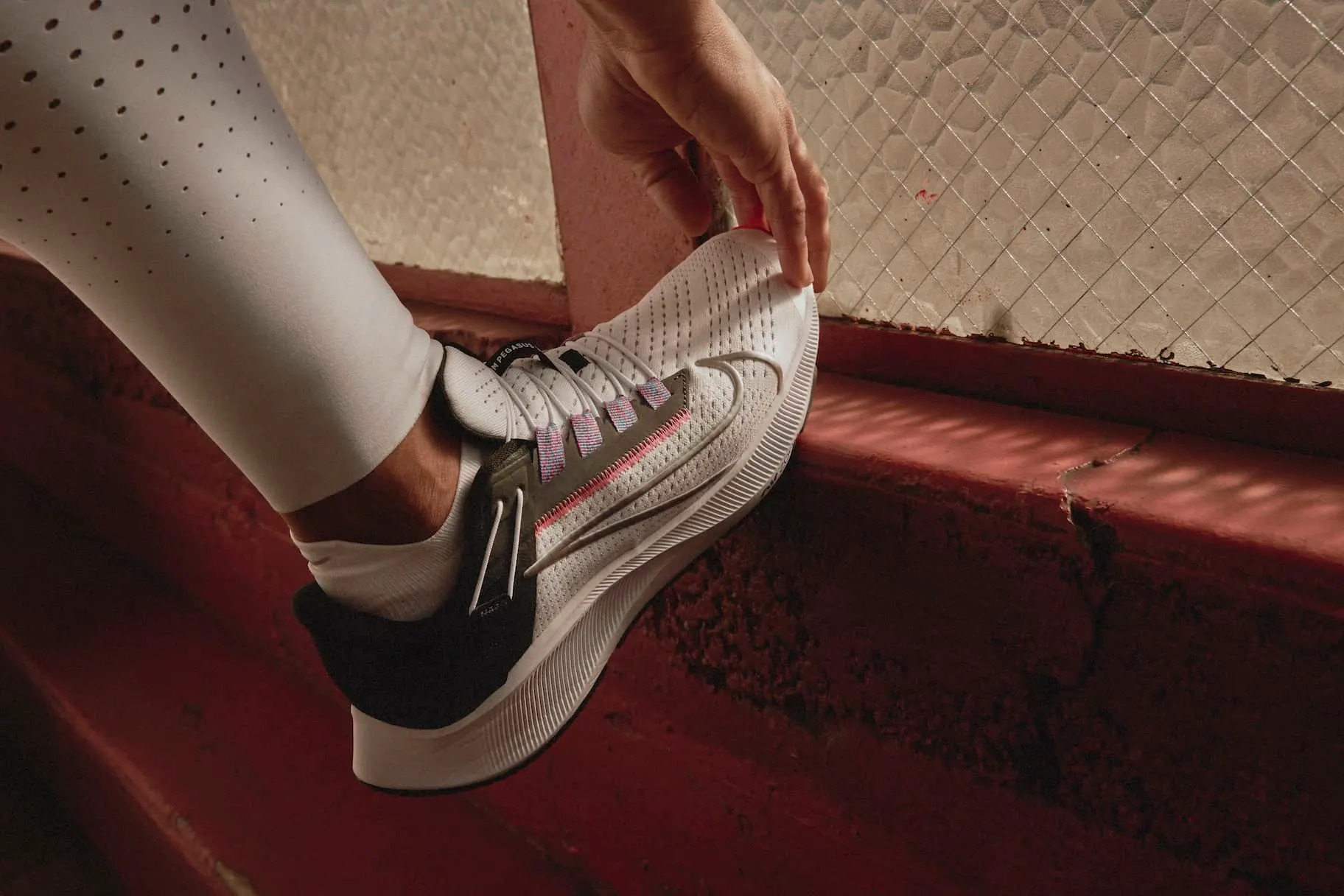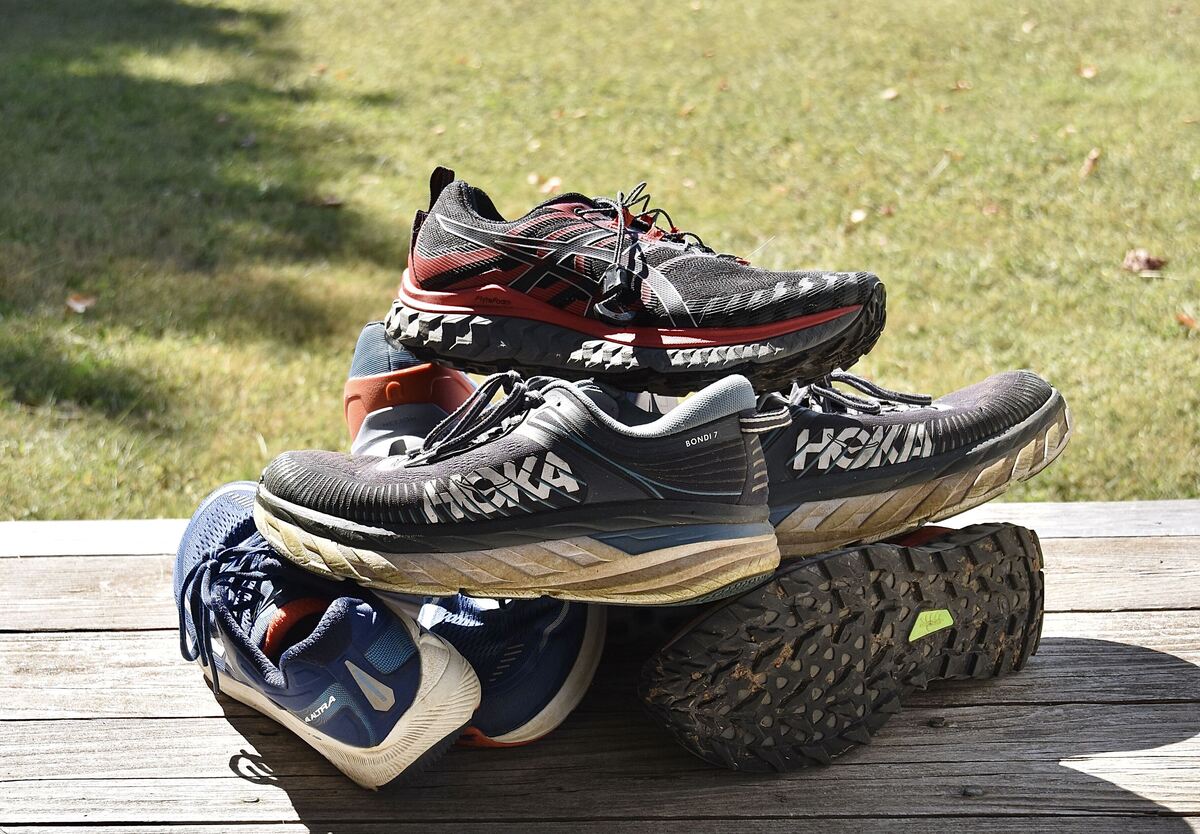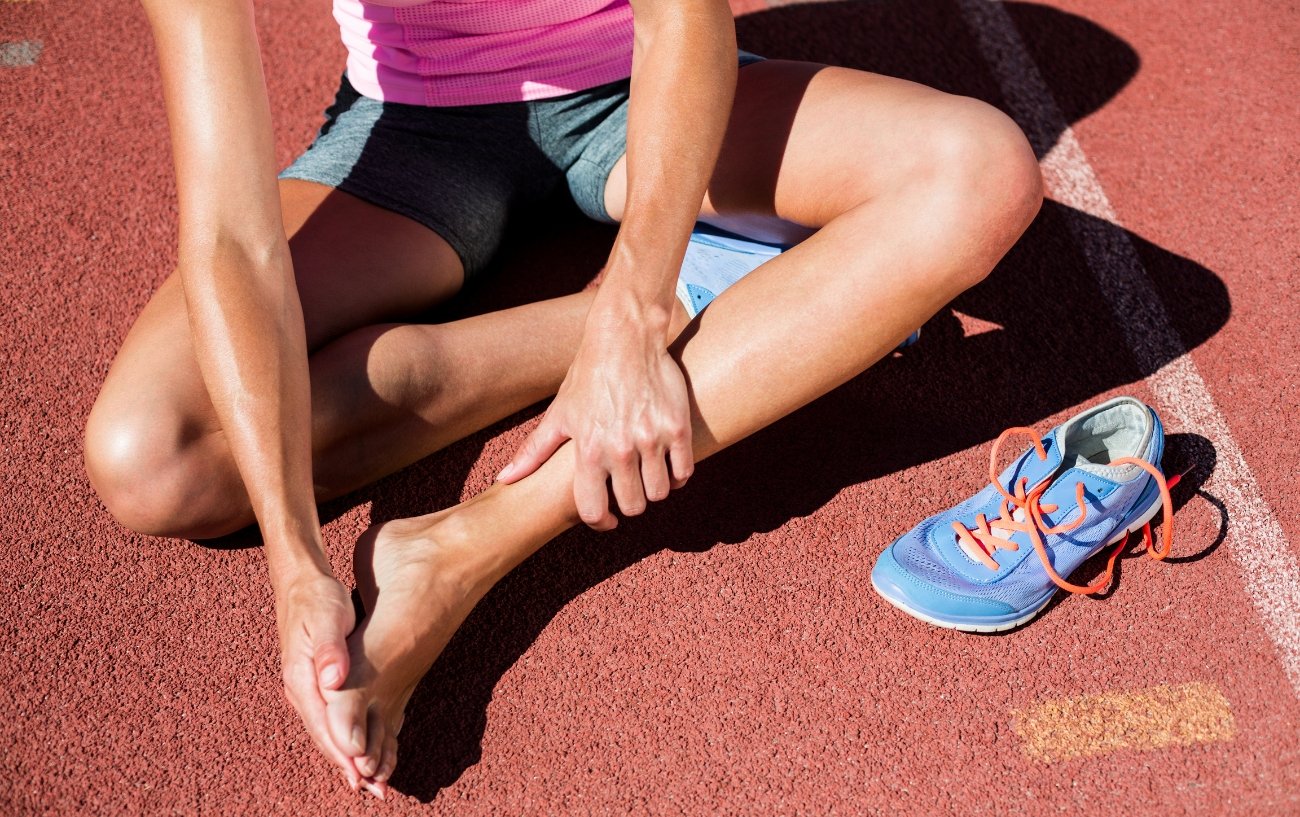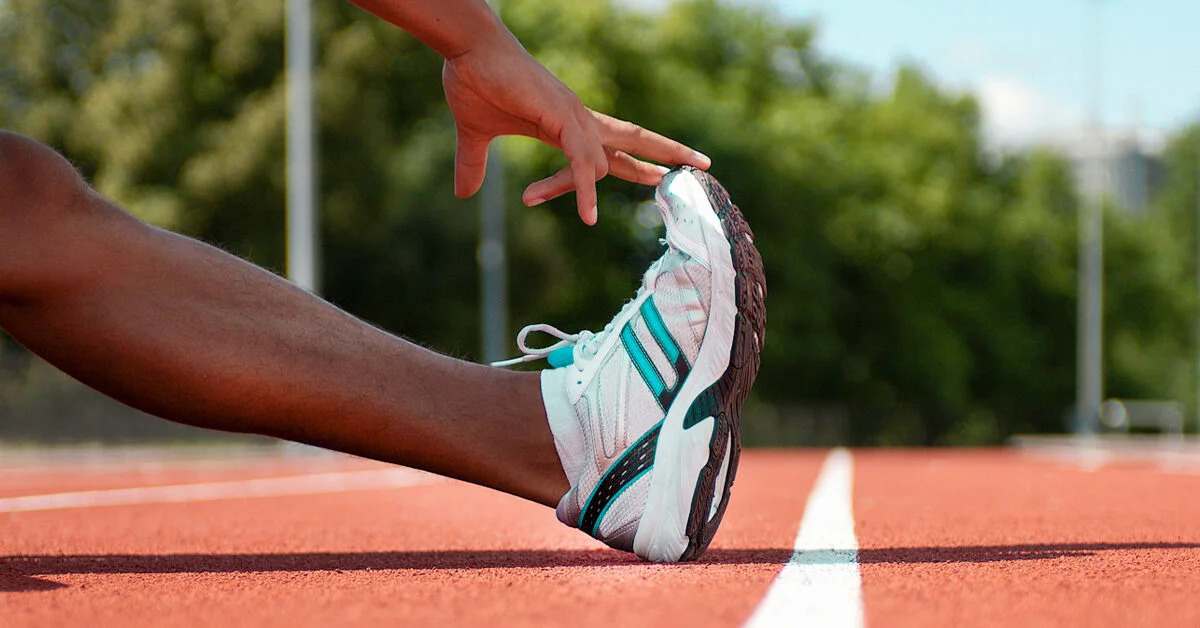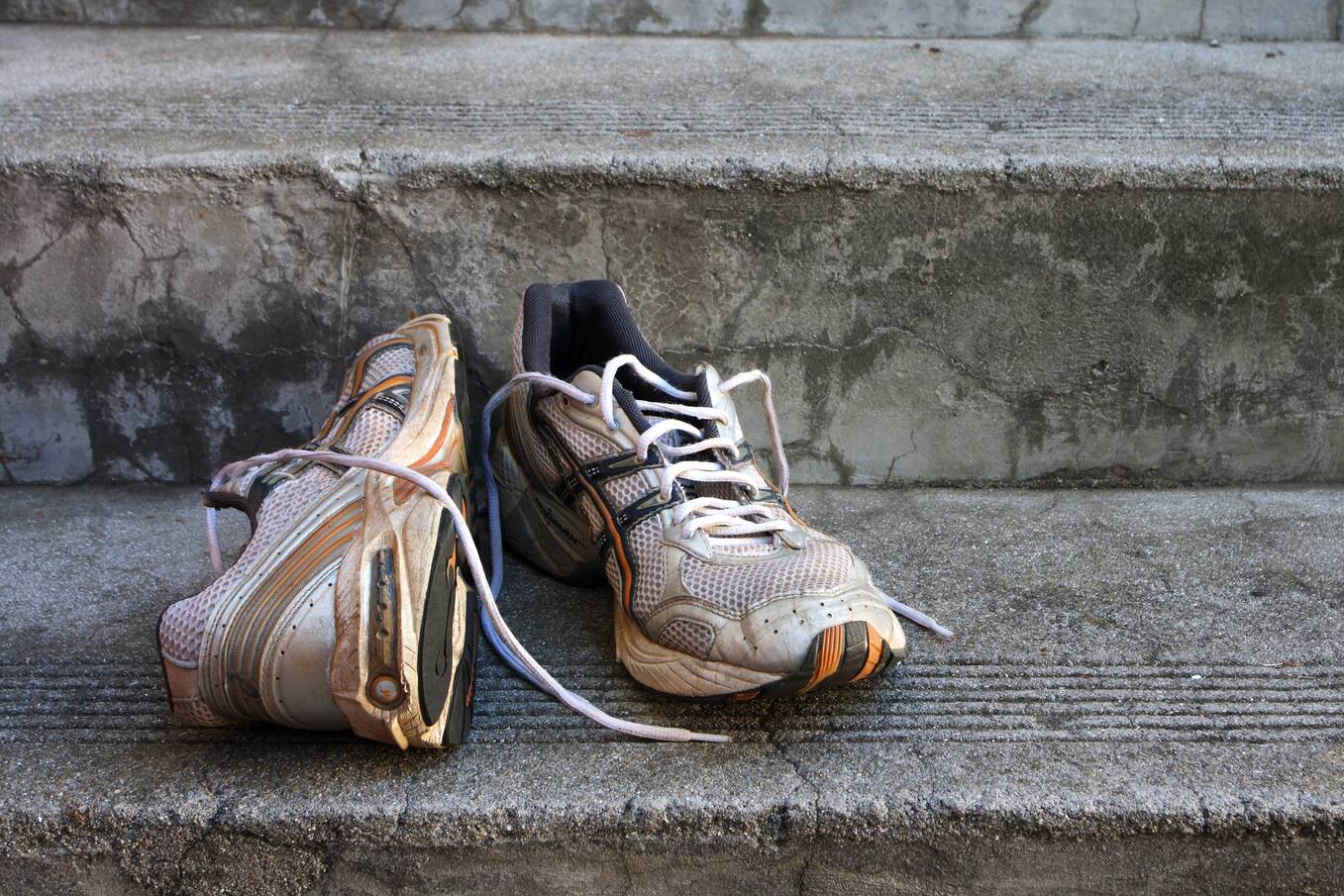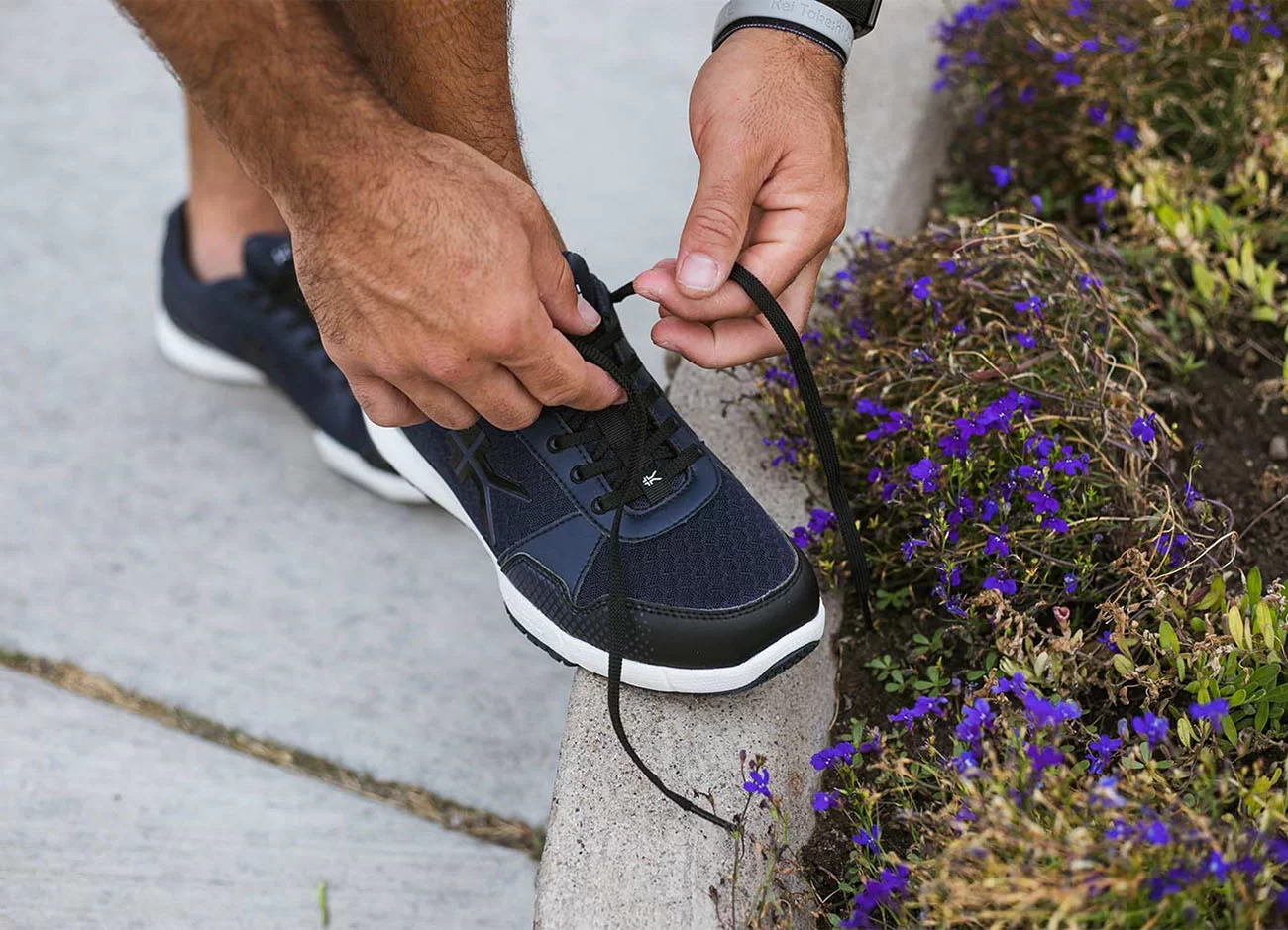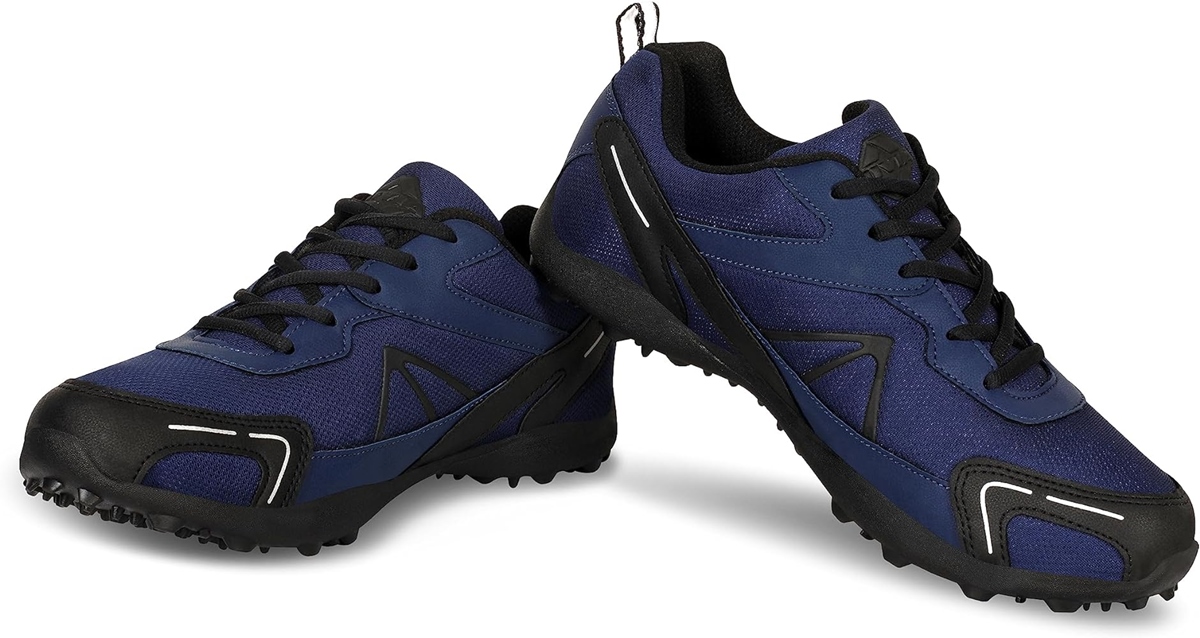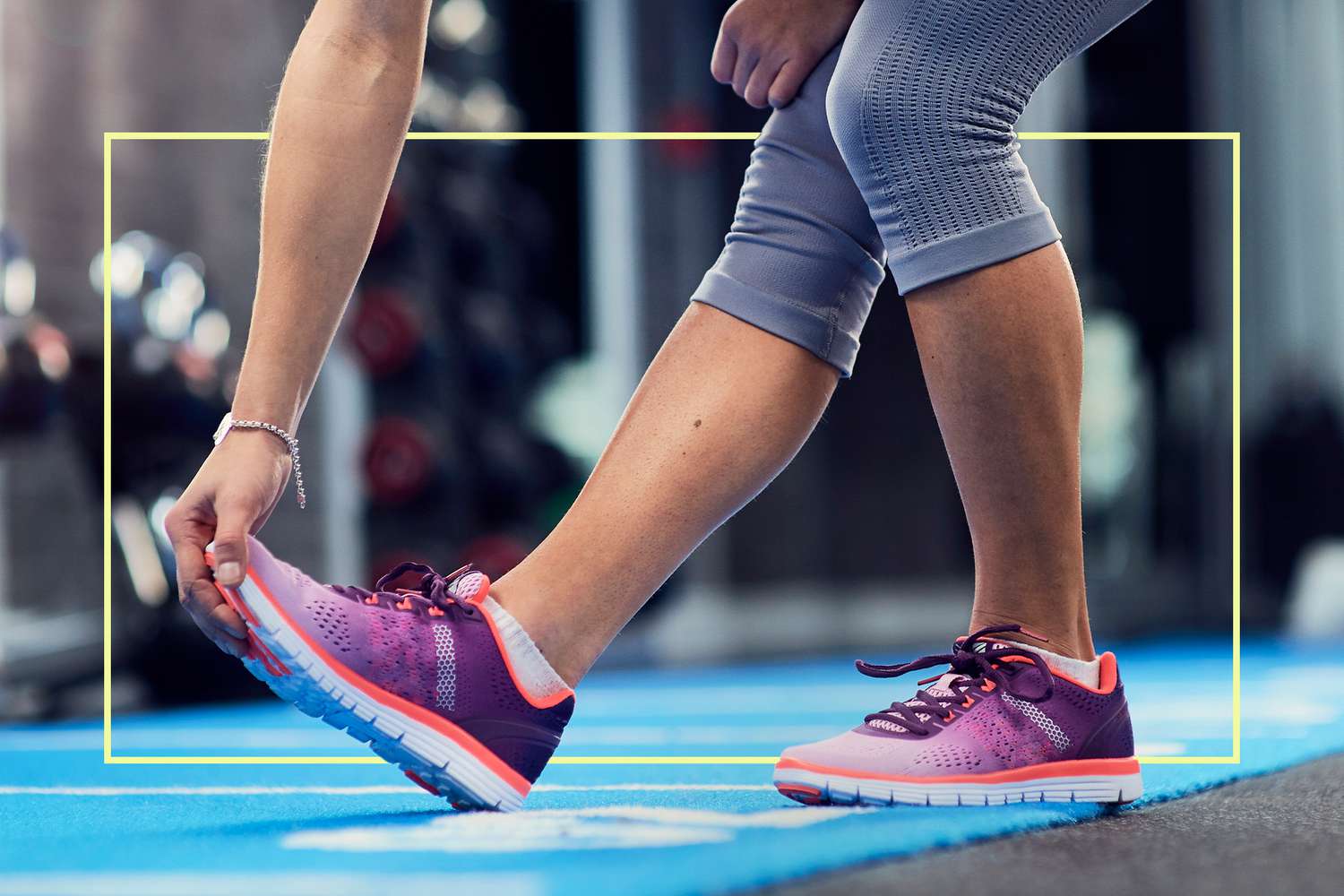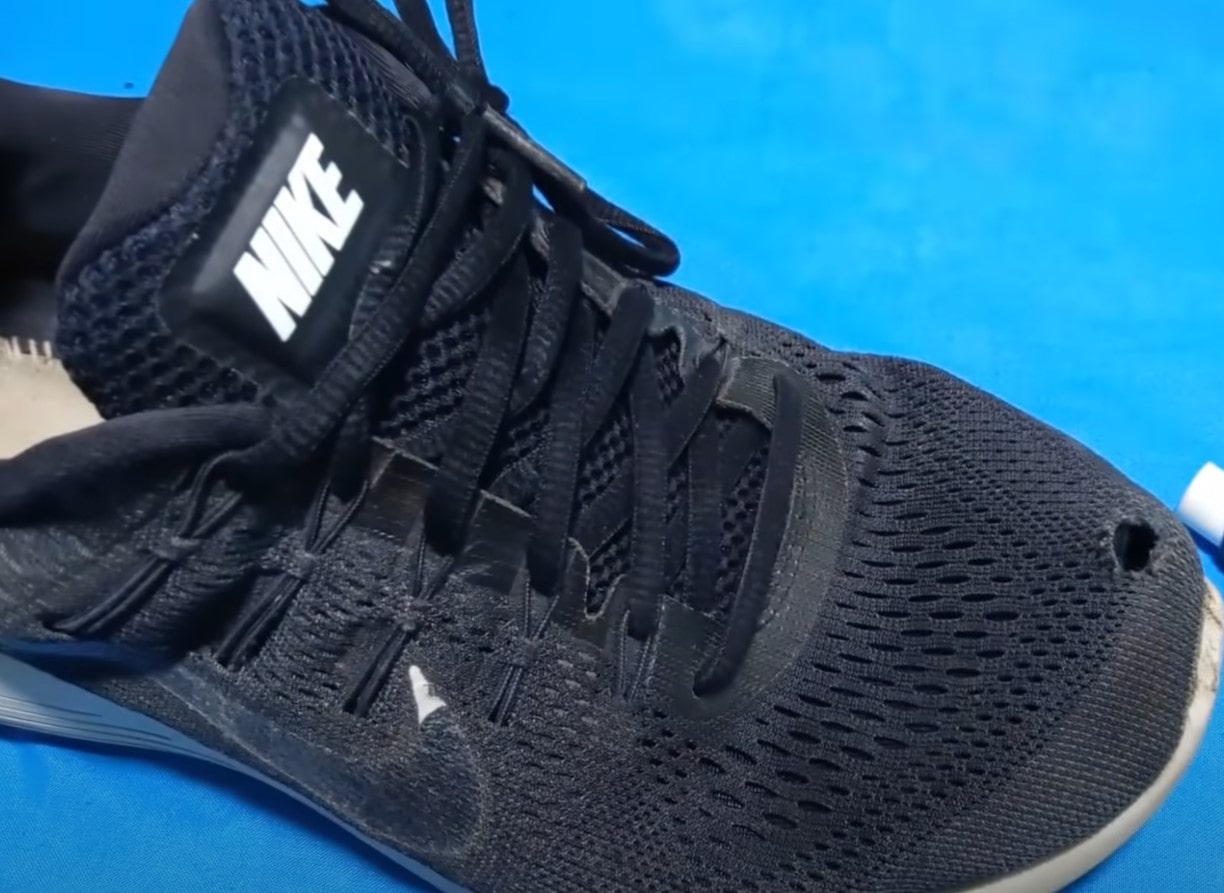

Featured
How To Fix Toe Holes In Running Shoes
Modified: January 22, 2024
Featured: Learn how to easily fix toe holes in your running shoes and prevent them from getting worse. Keep your feet protected and extend the life of your favorite running shoes.
Introduction
Running shoes are an essential part of any runner’s gear. They provide comfort, support, and protection, allowing runners to perform at their best. However, one common issue that many runners face is the appearance of toe holes in their running shoes. These unsightly holes can not only affect the aesthetic appeal of the shoes, but they can also compromise their functionality and durability.
Toe holes in running shoes typically occur due to prolonged use and friction between the toes and the shoe. The constant rubbing can cause the mesh or fabric in the toe box area to wear down and eventually tear, resulting in holes. This can be frustrating for runners who have invested in a good pair of running shoes and want them to last.
Fortunately, there are various ways to fix toe holes in running shoes. In this article, we will explore the causes of toe holes, assess the extent of damage, and provide step-by-step instructions on how to repair them. We will also discuss alternative solutions and offer prevention tips to help you avoid toe holes in the future.
Whether you’re a seasoned runner or just starting on your fitness journey, knowing how to fix toe holes in running shoes will come in handy. Not only will it save you money from buying new shoes, but it will also ensure that your feet are well-protected and comfortable during your runs.
Understanding the Causes of Toe Holes
Toe holes in running shoes can occur due to a variety of factors. Understanding these causes will help you not only address the issue but also prevent it from happening in the future.
Friction is the primary culprit behind toe holes. As you engage in physical activity, your feet naturally move and slide inside your shoes. This movement, combined with the repetitive motion of running, can lead to increased friction between your toes and the shoe’s toe box. Over time, this friction can wear down the fabric or mesh material, causing holes to form.
Another cause of toe holes is the fit of the shoe. If your shoes are too tight or the toe box is too narrow, it can put excessive pressure on your toes, leading to increased friction and the eventual formation of holes. Similarly, if your shoes are too loose, your toes may move around excessively, creating rubbing and friction that can damage the shoe material.
In addition to fit issues, the quality of materials used in the construction of the shoe can also contribute to the formation of toe holes. Lower-quality shoes may have thinner or less durable fabrics in the toe box area, making them more susceptible to wear and tear. It’s essential to invest in well-constructed running shoes made with durable materials to reduce the likelihood of toe holes.
Furthermore, factors such as moisture and dirt can exacerbate the formation of toe holes. When your shoes get wet, either due to sweat or running in wet conditions, the moisture can weaken the fabric, making it more prone to tearing. Dirt particles can also act as an abrasive, increasing friction and accelerating the wearing-down process.
Lastly, individual foot mechanics can play a role in the development of toe holes. People with certain foot types, such as those with high arches or prominent toes, may be more prone to experiencing toe holes due to the increased pressure and movement in the toe box area.
By understanding the causes of toe holes in running shoes, you can take proactive measures to address and prevent them. In the next section, we will discuss how to assess the extent of damage to determine the best course of action.
Assessing the Extent of Damage
Before you begin the repair process, it’s important to assess the extent of damage to your running shoes. This will help you determine the best course of action and whether the shoes are salvageable or need to be replaced.
Start by closely examining the toe box area of your shoes. Look for any visible holes, tears, or frayed fabric. Take note of the size and location of the damage, as well as whether the surrounding material is intact or starting to wear thin.
If the damage is minor and limited to a small hole or tear, it may be possible to repair the shoes yourself. However, if the damage is extensive, with multiple holes or significant wear, it may be more cost-effective to invest in a new pair of running shoes.
In addition to the visible damage, pay attention to how the shoes feel when you wear them. If you notice any discomfort, such as rubbing or pressure on your toes, it may indicate that the damage is affecting the shoe’s functionality. This can impact your running performance and increase the risk of further damage or injury.
It’s also essential to consider the age and overall condition of the shoes. If your shoes are already well-worn and nearing the end of their lifespan, it may not be worthwhile to invest time and effort into repairing them. In such cases, it’s recommended to replace them with a new pair for optimal comfort and performance.
By carefully assessing the extent of damage, you can make an informed decision about whether to repair or replace your running shoes. In the next section, we will discuss the necessary steps to take before starting the repair process.
Preparing for the Repair Process
Before you begin repairing the toe holes in your running shoes, it’s important to gather the necessary materials and create a suitable workspace. Taking these preparatory steps will ensure a smooth and effective repair process.
The first step is to gather the materials you’ll need. This typically includes a pair of scissors or craft knife for cutting fabric, a needle and thread or fabric glue for fixing the holes, and a patch material such as shoe glue or adhesive-backed fabric patches. Additionally, consider having a small brush or cloth for cleaning the shoe’s surface and removing dirt and debris.
Once you have your repair materials ready, find a clean and well-lit workspace where you can comfortably work on your shoes. It’s best to choose an area with good ventilation to avoid inhaling any fumes from the adhesive materials. A table or countertop covered with a clean towel or mat can provide a suitable surface for the repair process.
Before you get started, take a moment to clean the shoe’s surface. Use a small brush or cloth to remove any dirt, dust, or debris from the area surrounding the toe holes. This will ensure better adhesion and a neater repair outcome.
Next, carefully remove any loose threads or frayed fabric around the toe holes. Using scissors or a craft knife, trim any excess material to create a clean edge. This will help the repair patch adhere more securely to the shoe’s surface.
Lastly, read through the repair instructions provided with the patch material or adhesive you’re using. Familiarize yourself with the recommended application process and any specific drying or curing times. This will ensure that you follow the correct procedures for a successful repair.
By preparing your materials and setting up a suitable workspace, you’ll be ready to tackle the toe-hole repair process with confidence. In the next section, we will explore the step-by-step instructions for repairing toe holes in running shoes.
Repairing Toe Holes in Running Shoes
Repairing toe holes in running shoes is a relatively simple process that can extend the life of your favorite pair. Follow these step-by-step instructions to effectively mend the holes and restore the functionality and appearance of your shoes.
1. Clean and prepare the shoe: Start by cleaning the area around the toe holes with a small brush or cloth to ensure proper adhesion. Remove any loose threads or excess fabric using scissors or a craft knife.
2. Apply adhesive: Depending on the repair material you’re using, apply a thin layer of shoe glue or fabric adhesive to the inside of the hole and the surrounding area. Use a small brush or applicator to evenly distribute the adhesive.
3. Patch the holes: Cut a piece of adhesive-backed fabric patch or use a fabric scrap to cover the hole. Press the patch firmly onto the adhesive, ensuring it covers the entire hole and overlaps the surrounding area for added strength. Smooth out any air bubbles or wrinkles.
4. Secure the patch: To make sure the patch adheres properly, apply pressure with your fingers or use a weighted object to keep it in place. Follow the instructions on the adhesive material regarding drying or curing times.
5. Reinforce stitching (optional): If you’re using a needle and thread, you can reinforce the repair by stitching around the patch or along the edges of the hole. Use a strong thread and a small needle, carefully sewing through the patch and shoe material.
6. Let it dry: Allow the adhesive to fully dry or cure according to the instructions. This may take a few hours or overnight, depending on the adhesive used. Avoid wearing the repaired shoes until the adhesive is completely set.
7. Trim and clean up: Once the adhesive is dry, trim any excess patch material using scissors or a craft knife. Gently clean up any adhesive residue around the repaired area, using an appropriate cleaner or solvent if necessary.
By following these steps, you can effectively fix the toe holes in your running shoes and extend their lifespan. However, it’s important to note that while this repair method can be effective for minor damage, it may not provide a permanent solution for more extensive holes or heavily damaged shoes.
In the next section, we will explore alternative solutions and provide tips on preventing toe holes in running shoes.
Alternative Solutions and Prevention Tips
While repairing toe holes in running shoes can be a practical solution, there are alternative options to consider if the damage is severe or if you want to prevent toe holes from occurring in the first place. Here are some alternative solutions and prevention tips:
1. Professional repair: If you’re not confident in your own repair skills or if the damage is extensive, consider taking your shoes to a professional cobbler or shoe repair shop. They have the expertise and specialized equipment to effectively repair and reinforce the toe area of your shoes.
2. Toe protectors: To prevent future toe holes, you can invest in toe protectors or caps. These are specifically designed to fit over the toe area of your running shoes and provide an extra layer of protection against friction and wear. They are often made of durable materials such as silicone or rubber.
3. Proper shoe fit: Ensure your running shoes fit properly and have enough room in the toe box area. Your toes should be able to wiggle comfortably, without feeling cramped or restricted. Consider getting a professional shoe fitting to ensure you’re wearing the right size and style for your foot shape and running needs.
4. Quality materials: Invest in high-quality running shoes made with durable materials. Look for shoes with reinforced mesh or synthetic overlays in the toe box area. These materials are typically more resistant to wear and tear, reducing the likelihood of toe holes forming.
5. Regular maintenance: Take care of your running shoes by cleaning them regularly and drying them properly after each run. Remove dirt and debris from the toe area to minimize friction. If your shoes get wet, stuff them with newspaper or use a shoe dryer to ensure thorough drying and prevent moisture-related damage.
6. Rotate your shoes: Rotate between at least two pairs of running shoes. This allows each pair to have enough time to fully dry and recover between runs, reducing the chance of excessive wear and tear in the toe area.
7. Listen to your feet: Pay attention to any discomfort or signs of rubbing as you run. If you feel any irritation or pressure on your toes, address it promptly. Consider using anti-friction balms or inserts to reduce friction and protect your toes.
By exploring these alternative solutions and implementing prevention tips, you can minimize the occurrence of toe holes in your running shoes and ensure they last longer. Taking proactive measures to preserve the integrity of your shoes will save you time and money in the long run.
Conclusion
Toe holes in running shoes can be a frustrating issue for runners, but fortunately, there are ways to address and prevent them. By understanding the causes of toe holes, assessing the extent of damage, and properly preparing for the repair process, you can effectively mend your shoes and extend their lifespan.
Repairing toe holes involves cleaning and preparing the shoe, applying adhesive, patching the holes, and securing the patch. While this approach can be successful for minor damage, it may not be a permanent solution for more extensive holes or heavily damaged shoes. In such cases, seeking professional repair or considering alternative solutions, such as toe protectors, may be more suitable options.
Prevention is key to avoiding toe holes in running shoes. Ensuring proper shoe fit, choosing high-quality materials, and practicing regular maintenance can go a long way in preventing damage. Listening to your feet and addressing any discomfort or signs of rubbing promptly can also help maintain the integrity of your shoes.
By taking the time to repair, maintain, and protect your running shoes, you can not only prolong their lifespan but also enhance your running experience. Your feet deserve the best comfort and support, and by implementing these strategies, you can ensure that your shoes provide just that.
So, the next time you encounter toe holes in your running shoes, don’t fret. With the right knowledge and a little effort, you can get back on the road with confidence, knowing that your shoes are in excellent condition and ready to support you every step of the way.
